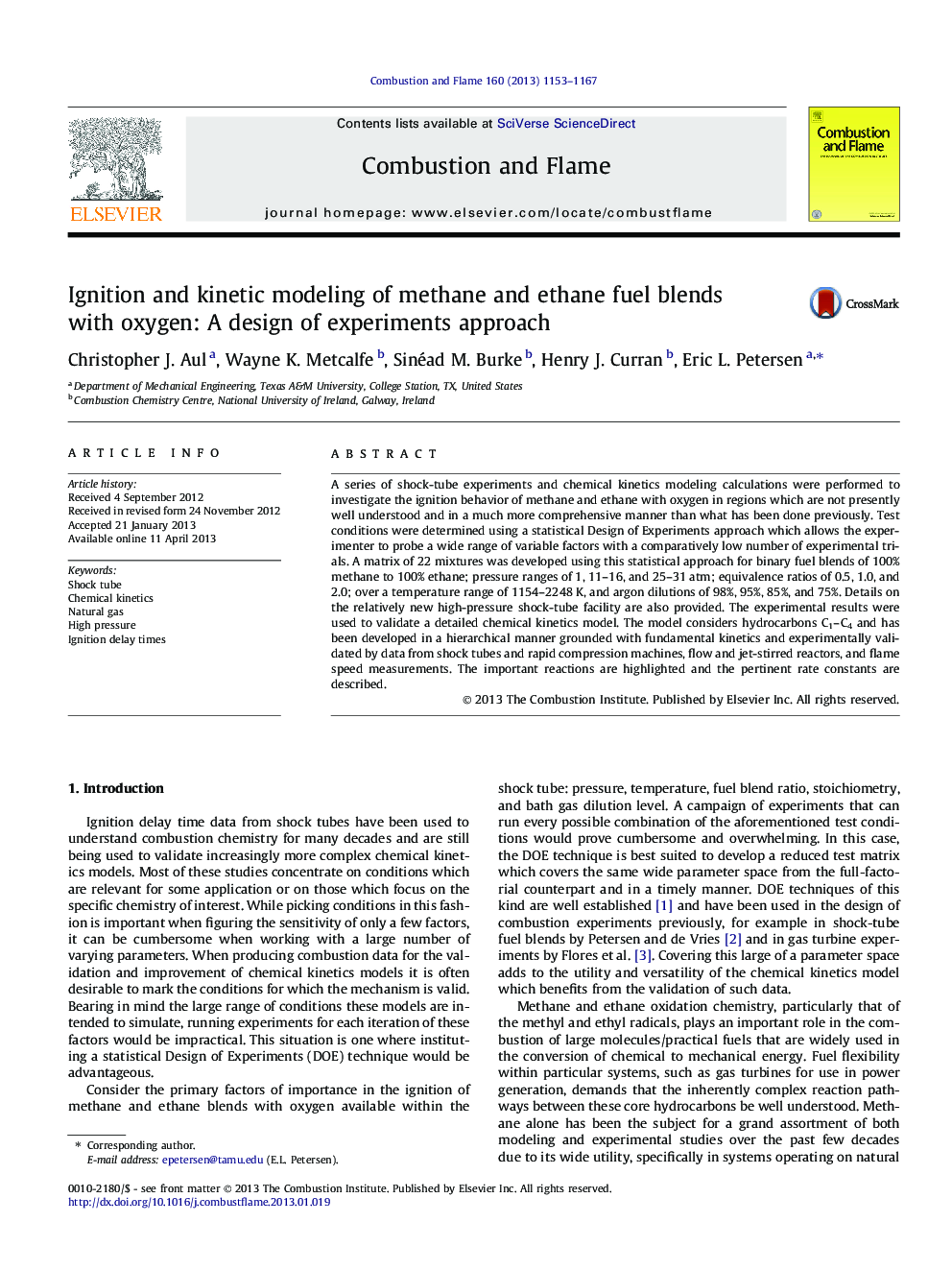| Article ID | Journal | Published Year | Pages | File Type |
|---|---|---|---|---|
| 169100 | Combustion and Flame | 2013 | 15 Pages |
A series of shock-tube experiments and chemical kinetics modeling calculations were performed to investigate the ignition behavior of methane and ethane with oxygen in regions which are not presently well understood and in a much more comprehensive manner than what has been done previously. Test conditions were determined using a statistical Design of Experiments approach which allows the experimenter to probe a wide range of variable factors with a comparatively low number of experimental trials. A matrix of 22 mixtures was developed using this statistical approach for binary fuel blends of 100% methane to 100% ethane; pressure ranges of 1, 11–16, and 25–31 atm; equivalence ratios of 0.5, 1.0, and 2.0; over a temperature range of 1154–2248 K, and argon dilutions of 98%, 95%, 85%, and 75%. Details on the relatively new high-pressure shock-tube facility are also provided. The experimental results were used to validate a detailed chemical kinetics model. The model considers hydrocarbons C1–C4 and has been developed in a hierarchical manner grounded with fundamental kinetics and experimentally validated by data from shock tubes and rapid compression machines, flow and jet-stirred reactors, and flame speed measurements. The important reactions are highlighted and the pertinent rate constants are described.
